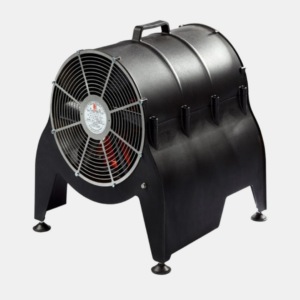There are many benefits of using hydrogen in hazardous areas but, like all flammable materials, it’s essential to handle the gas safely and prevent it from coming into contact with sources of ignition (or temperatures high enough to trigger auto-ignition).
In this guide, we’ll look at some of the key issues that surround working with hydrogen, including which Gas Group it is classified under, its T rating, and some of the hazardous area equipment that can be used in the presence of hydrogen gas.
Introduction to working with hydrogen
Elemental hydrogen is the first chemical on the Periodic Table, with an atomic number of 1 and a single valence electron. This valency makes hydrogen highly reactive, so that it is generally found in molecules like hydrogen gas (H2) and – most commonly on Earth – in water (H2O).
Hydrogen has a wide explosive range:
- LEL (Lower Explosive Limit) 4.0%
- UEL (Upper Explosive Limit) 77%
When working with hydrogen, all personnel should remember this. If a leak occurs, this extremely broad range of explosive concentrations means that hydrogen is much more likely (compared with other common gases) to explode if a source of ignition is found.
Common sources of hydrogen
Hydrogen gas can be extracted from water, biomass, methane and other substances using simple and compact hydrogen electrolysers, and is a good source of energy when burned, leaving behind only water. All of this makes hydrogen a useful raw material for many industrial processes.
Onsite hydrogen electrolysers can provide a reliable supply of the gas for businesses, but this type of equipment should be treated with respect, especially if other flammable gases, dusts or high process temperatures are present nearby.
Benefits of using hydrogen
So, what are the benefits of using hydrogen in industrial settings?
- High energy content per unit mass
- ‘Clean’ with only water as a combustion byproduct
- Non-toxic and lighter than air
The low density of hydrogen gas means that in an open-air environment, any leak will usually disperse naturally by rising into the air.
However, it’s important to be aware of the risks of using hydrogen, especially in an enclosed setting where any accumulation of gas will not easily escape into the atmosphere.
Drawbacks of using hydrogen
Hydrogen is highly flammable. Its auto-ignition temperature is 560C, but its temperature classification (T rating) is T6, the strictest category under both the USA and IEC systems.
The T6 T rating of hydrogen means that the surface temperature of electrical equipment used within the surrounding hazardous area should not exceed 85C. You can see the full list of T ratings here.
If acetylene is also present, hydrogen is classified into Zone 0, 1 and 2, Group IIC. Without acetylene, hydrogen alone falls into Group IIB+H2, which still represents an extremely high risk of ignition.
Read more about NEC & IEC Zone System Gas & Dust Groups.
Conclusion
Hydrogen’s benefits are compelling, offering a ‘clean’ source of energy for industrial processes, high energy density per unit mass and a reliable onsite production method in the form of compact hydrogen electrolysers.
But it’s crucial to be aware of the risks and to keep safety in mind when working in IIC and IIB+H2 hazardous areas, including the T rating of the electrical equipment you use in the area.
You can check the certifications of products on the Cable Systems website on the ‘Technical Info’ tab; for example, our Eaton Crouse-Hinds MEDC loudspeakers are rated for IIC and IIB+H2 hazardous zones, giving you confidence in your audible warnings.
Check the Technical Info and/or downloadable datasheets for any of our products, and you can use hydrogen in your industrial processes without facing unnecessary risk.





